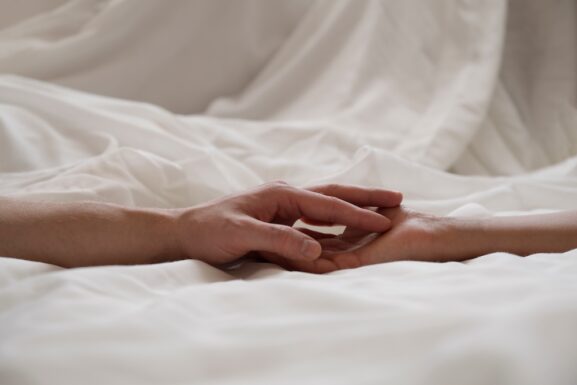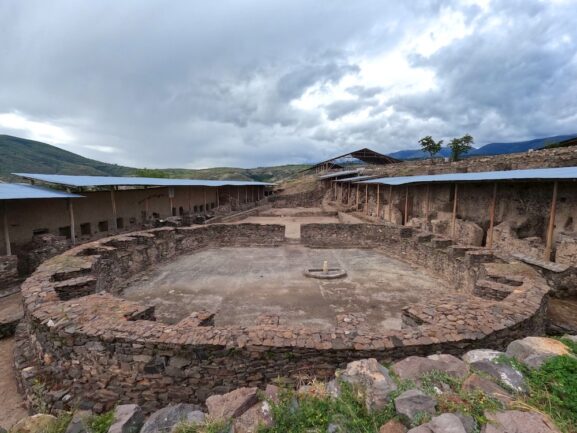1P-LSD: Research Chemical, or Designer Drug?
In the world of research chemicals, or novel psychoactive substances (NPSs), there are many derivatives and analogues of classic psychedelics.
This market is burgeoning due to the illegal status of compounds like psilocybin, mescaline, and LSD. All these substances are Schedule I drugs in the United States. This means the governments believes that they have no medical value and a high potential for abuse. Classic psychedelics sit in similar legal categories in most countries.
Interested in joining a Psychedelics Clinical Trial? Sign up here now and we will connect you with a clinical trial in your area when one becomes available.
However, chemicals that are structurally similar to classic psychedelics, with similar effects, can be created, evading these legal restrictions. As the selling and buying of these NPSs increase, this can attract the attention of the government. In time, many NPSs become banned, but then new analogues will appear on the market.
There have been many analogues of LSD, with one of the most popular being 1P-LSD. If you’re new to psychedelic research chemicals, you may be wondering what the similarities and differences are between LSD and 1P-LSD. These are worth exploring.
We should also take a look at the legality of 1P-LSD, as this has changed over time, and varies from country to country. Also, like all research chemicals, the safety of 1P-LSD is uncertain. However, there are harm reduction practices that will help keep you safe.
What Is 1P-LSD?
1P-LSD or 1-propionyl-lysergic acid diethylamide is a psychedelic drug. It belongs to the lysergamide class of psychedelics, as does LSD (lysergic acid diethylamide).
1P-LSD is a derivative and analogue of LSD. It is structurally very similar to LSD. The chemical difference is that it modifies the LSD molecule by adding a propionyl group to the nitrogen molecule of LSD’s indole. 1P-LSD is a minute chemical tweak away from LSD.
Vendors have been selling 1P-LSD as a research chemical, or designer drug, since 2015. It appeared on the dark web in January of that year, after AL-LAD, another LSD substitute, was banned. It was marketed as a legal alternative to LSD, as were other novel lysergamides like ALD-52 and ETH-LAD.
However, the original date when 1P-LSD was synthesized is unknown. The substance does not appear in any academic literature before it arrived on the research chemical market.
Pharmacology
Based on its structural similarity to LSD, 1P-LSD most likely stimulates the serotonin 5-HT2A receptor. As with classic psychedelics, the psychedelic effects of 1P-LSD primarily come from its action on the 5-HT2A receptors distributed throughout the brain.
One theory is that 1P-LSD may act as a prodrug for LSD. A prodrug is a substance that is not psychoactive, but when metabolized by the body, it turns into a psychoactive compound (or metabolite). Psilocybin is an example of a prodrug. It is not psychoactive itself. The body turns it into the psychoactive chemical psilocin.
Since LSD is detected when 1P-LSD is incubated in human serum, 1P-LSD may act, at least in part, as a prodrug for LSD. However, this finding comes from an in vitro experiment (tested outside the living body, in an artificial environment). It has been unclear if 1P-LSD is metabolized into LSD in vivo (in the body).
Nonetheless, a 2020 study on two human male volunteers found that the levels of 1P-LSD in the serum after ingestion quickly diminished within the first hour while LSD was detected consistently during the experiment.
The authors of the study noted, “The bioavailability of LSD after oral ingestion of 1P-LSD was close to 100 percent. The psychosensory effects of 1P-LSD and their time course were comparable to those seen after uptake of LSD in other studies which further supports the prodrug hypothesis.”
It’s possible that 1P-LSD possesses intrinsic psychoactive effects, which would make it distinct from psilocybin, which is purely a prodrug.
RELATED: Study Finds LSD Reduces Anxiety
Effects Of 1P-LSD
Anecdotal reports from many users suggest that the subjective effects of 1P-LSD are extremely similar to those of LSD. In fact, they are so similar that both drugs are virtually indistinguishable. This would make sense if 1P-LSD acts as a prodrug for LSD.
It’s possible that knowing 1P-LSD is a different drug from LSD could lead to reports of slight differences in effects. The expectation that 1P-LSD is not the ‘real thing’, in other words, could color the experience. This would be an example of ‘set’ (your mindset going into an experience) affecting the quality of the trip.
Another example of this effect could be the belief that synthetically made psychedelics lack the spiritual depth of the same compound appearing in a natural form. It’s possible that this belief could be self-fulfilling to a certain extent.
Compared to other psychedelics such as psilocybin and ayahuasca, 1P-LSD is significantly more stimulating and fast-paced regarding its physical and cognitive effects.
Physical Effects
- Stimulation
- Spontaneous bodily sensations, including physical euphoria
- Tactile enhancement
- Appetite suppression
- Excessive yawning
- Nausea
- Increased perspiration
- Muscle contractions
- Pupil dilation
- Increased salivation
- Vasoconstriction
Visual Effects
- Color enhancement
- Pattern recognition enhancement
- Visual acuity enhancement
- Drifting (melting, breathing, morphing, and flowing)
- Color shifting
- Tracers
- After images
- Depth perception distortions
- Perspective distortions
- Symmetrical texture repetition
- Visual geometry (with eyes open or closed)
- Internal or external hallucinations (occurring typically with strong doses)
Emotional Effects
- Euphoria
- Bliss
- Joy
- Peacefulness
- Gratitude
- Compassion and love for oneself and others
- Anxiety
- Paranoia
- Fear
- Dread
- Panic
Cognitive Effects
- Introspection enhancement
- Creativity enhancement
- Personal meaning enhancement
- Increased suggestibility
- Delusional thinking
- Increased music appreciation
- Increased sense of humor and laughing fits
- Thought acceleration
- Thought disorganization
- Thought loops
- Time distortion
Auditory Effects
- Enhancement
- Auditory distortion
- Auditory hallucinations
Mystical Effects
- Ego dissolution
- Unity and interconnectedness
- Coming into contact with the ‘divine’ or a ‘higher power’
- Timelessness and spacelessness
- Ineffability
- Positive mood
- Noetic quality (a feeling of gaining direct access to truth or ‘ultimate reality’)
Toxicity And Harm Potential Of 1P-LSD
The toxicity and long-term health effects of recreational 1P-LSD use have not been studied. This is because the drug is a research chemical with almost no history of human use.
Anecdotal reports suggest that there are no negative health effects attributed to using 1P-LSD on its own and infrequently.
Based on its similarity to LSD, 1P-LSD is assumed to be physiologically safe. Relatively few physical side effects have been reported following the use of 1P-LSD.
However, as with LSD and psychedelics more generally, 1P-LSD may act as a trigger for those with certain underlying mental disorders. Those with a personal or family history of a psychotic disorder (e.g. schizophrenia) or manic episodes are generally advised not to use this substance.
Also, like other psychedelics, using 1P-LSD can result in a rare condition known as hallucinogen persisting perception disorder (HPPD). This means it leads to lingering visual changes after a trip that become a source of distress. HPPD has occurred in users following 1P-LSD use.
Moreover, 1P-LSD can result in distressing or challenging experiences (otherwise known as ‘bad trips’). Many users find they experience some benefit or value from these types of trips. But not all do. For some, they may result in lingering, negative effects, including increased depression and anxiety. This is more likely after a particularly traumatic experience.
Mixing 1P-LSD with cannabis can have strong and unpredictable effects. Use caution with this combination, as it can increase the risk of adverse psychological reactions. These include anxiety, paranoia, panic attacks, and psychosis. If you want to try the combination, start with only a fraction of your normal cannabis dose.
Overdose
1P-LSD has no known toxic dose. However, higher doses increase the risk of adverse psychological effects. These reactions include anxiety, delusions, and panic attacks. Medical attention is typically unnecessary — except in the case of severe psychotic episodes.
Administration of benzodiazepines or antipsychotics can help to relieve the negative effects of 1P-LSD. These should be a last resort, nonetheless. Often, mindful breathing, letting go, and receiving emotional support can help alleviate emotional distress.
Dependence And Abuse Potential
Although there is a lack of research in this area, it is assumed that, like LSD, 1P-LSD is non-addictive with a low potential for abuse.
Tolerance to the effects of 1P-LSD is built almost immediately after ingestion. In 1-2 weeks, as with LSD, tolerance to 1P-LSD should be back to zero. If you use 1P-LSD again before this time, you will need more of the drug to achieve the desired effects.
1P-LSD produces cross-tolerance with other psychedelics. This means that after the use of 1P-LSD, other psychedelics will have a reduced effect.
Similar to classic psychedelics, 1P-LSD does not cause physical dependence. Upon cessation of use, you won’t experience physical withdrawal symptoms.
However, it’s possible that someone may become psychologically dependent on 1P-LSD. Although uncommon, someone may use the substance frequently as a form of escapism.
The Legal Status Of 1P-LSD
1P-LSD is not scheduled under the UN Convention on Psychotropic Substances. However, it exists in a legal grey area in many countries. This means that, while it is not specifically illegal, you may still be charged for its possession under certain circumstances — such as under NPS laws and with the intent to sell or consume.
Here is the legal status of 1P-LSD in various countries around the world:
- Austria: Not illegal, but it may fall in the NPSG (Neue-Psychoaktive-Substanzen-Gesetz Österreich) as an analogue of LSD, thus making it illegal to supply for human consumption
- Canada: Not mentioned in the Controlled Drugs and Substances Act, so it is technically not illegal.
- Czech Republic: 1P-LSD is a controlled substance.
- Denmark: Specifically named on the list of illegal substances.
- Estonia: Schedule I controlled substance.
- Finland: A controlled substance.
- Germany: Controlled under the NpSG (New Psychoactive Substances Act). Production, import, and trading of the drug are punishable. Possession is illegal but not penalized.
- Japan: A controlled substance.
- Latvia: Controlled as an LSD structural analogue.
- Lithuania: 1P-LSD is illegal and specifically named on the list of illegal substances.
- Norway: A controlled substance.
- Romania: A controlled substance.
- Singapore: Class A controlled substance.
- Sweden: 1P-LSD is illegal.
- Switzerland: A controlled substance.
- Turkey: 1P-LSD is illegal.
- United Kingdom: 1P-LSD is illegal to produce, supply, or import under the Psychoactive Substances Act.
- United States: 1P-LSD is unscheduled. Since it can be considered a prodrug for LSD, its possession and sale may be prosecutable under the Federal Analogue Act.
Due to restrictions on the sale and consumption of 1P-LSD in various countries, other LSD analogues have appeared on the research chemical market. These include 1V-LSD, 1D-LSD, 1B-LSD, 1cP-AL-LAD, 1cP-LSD, and LSZ.



